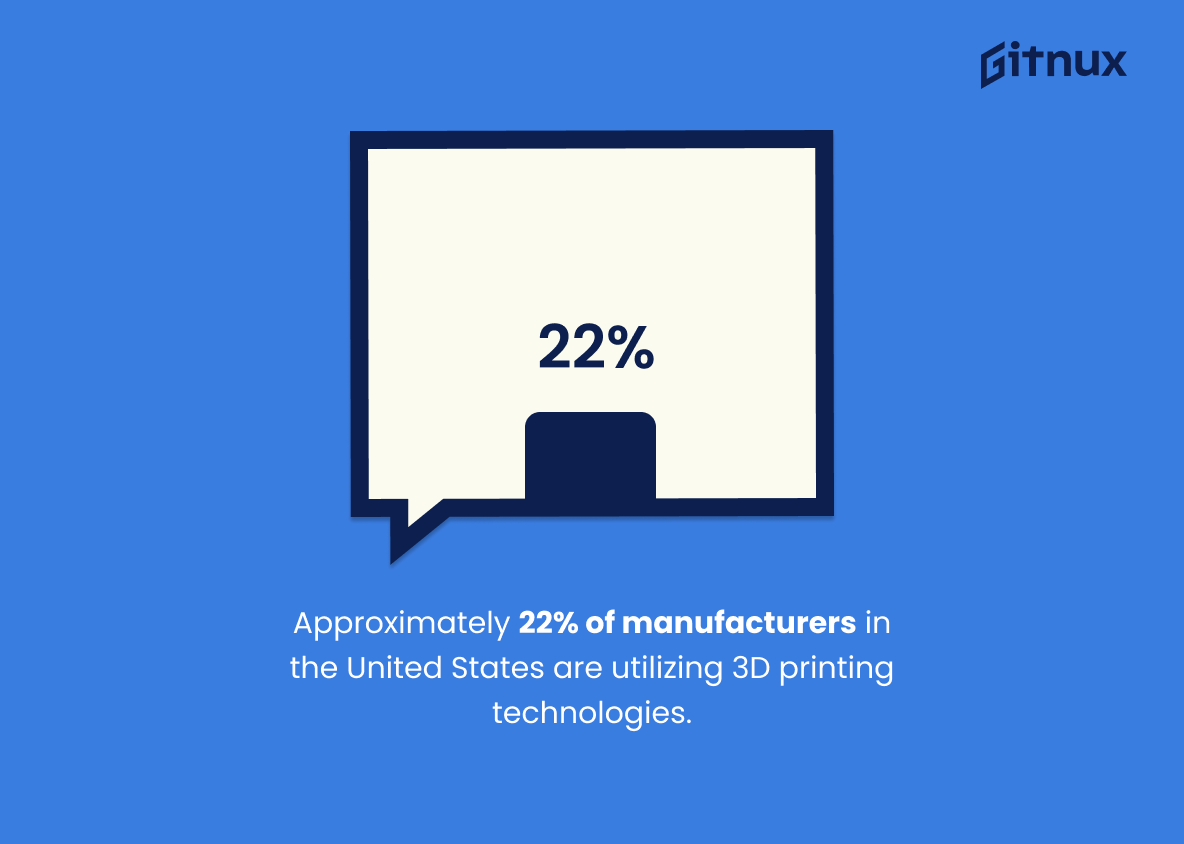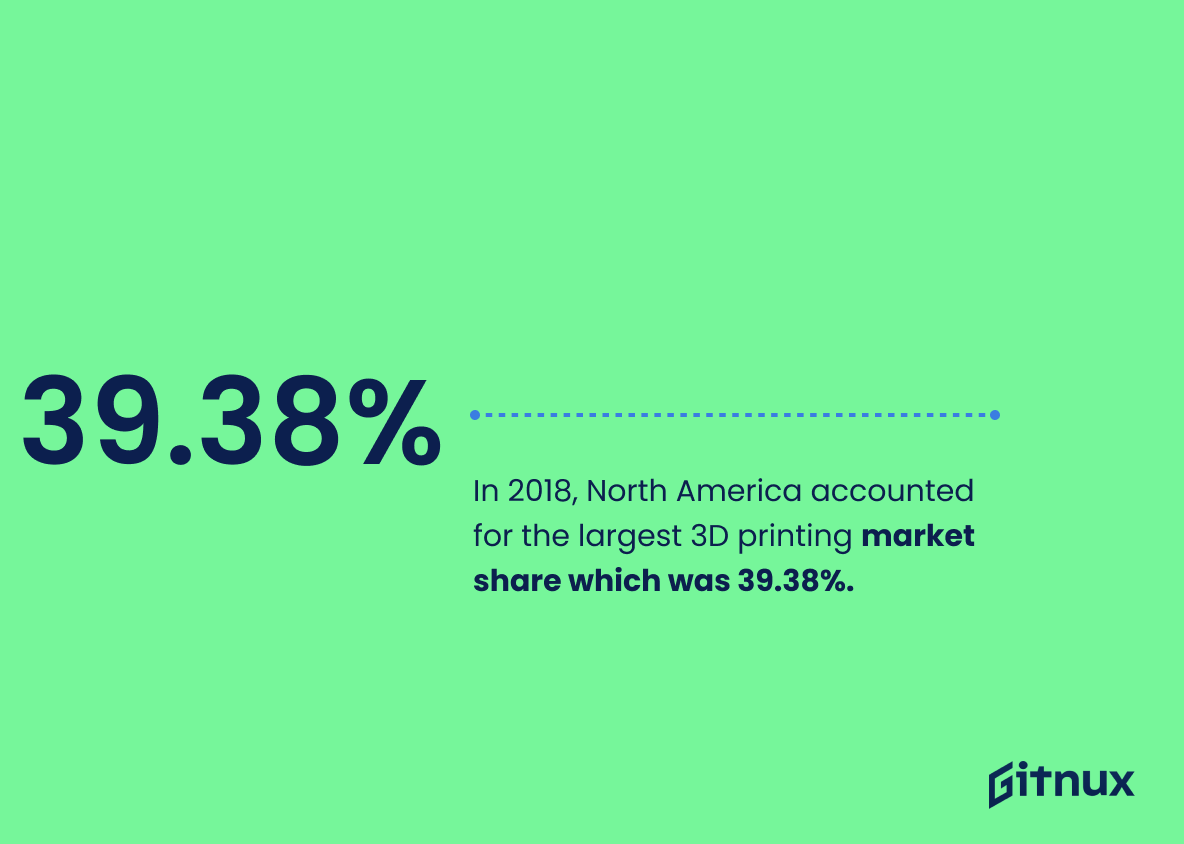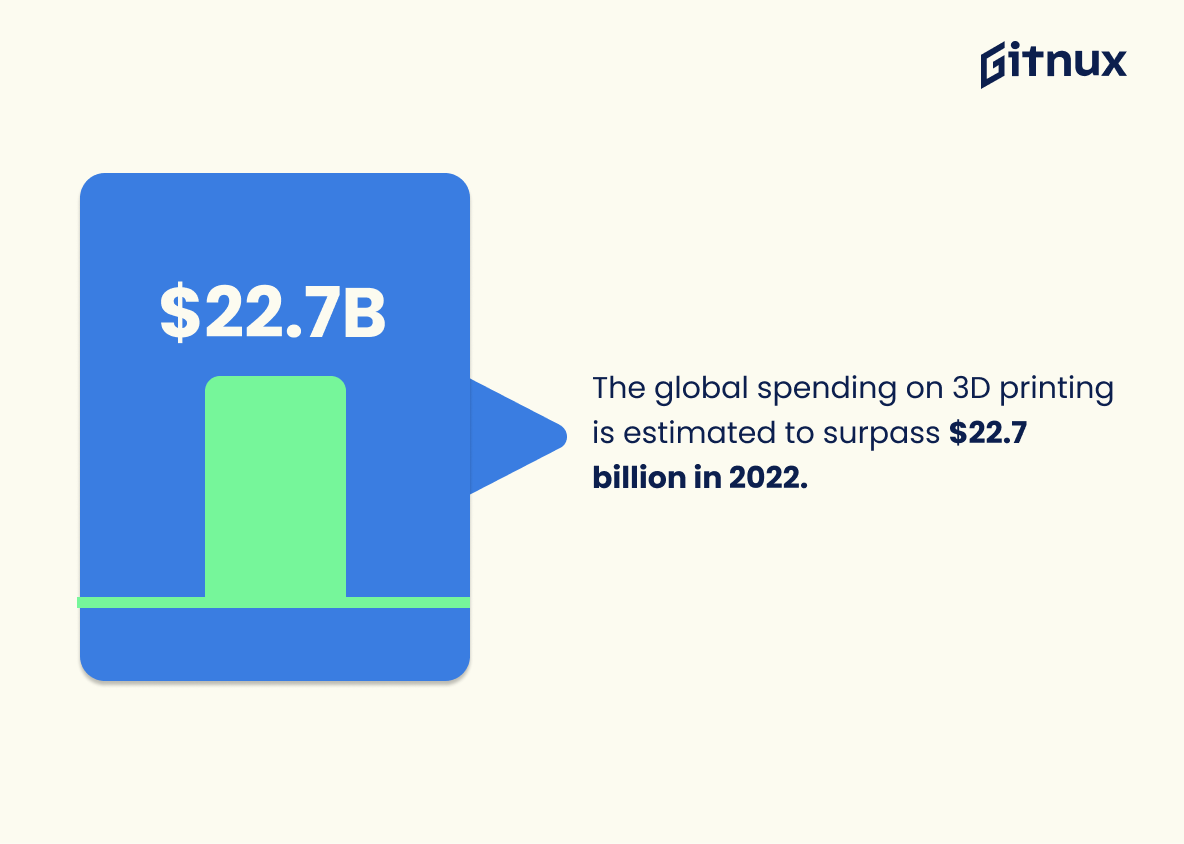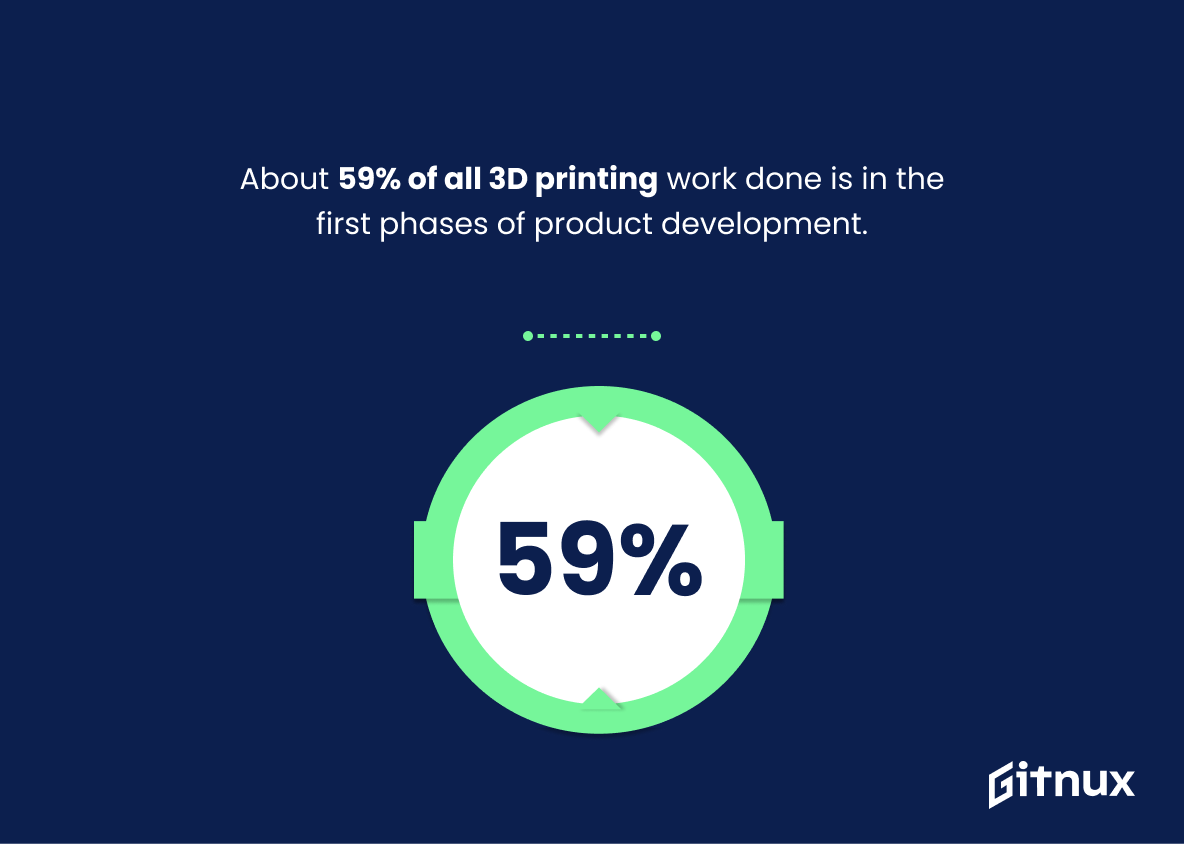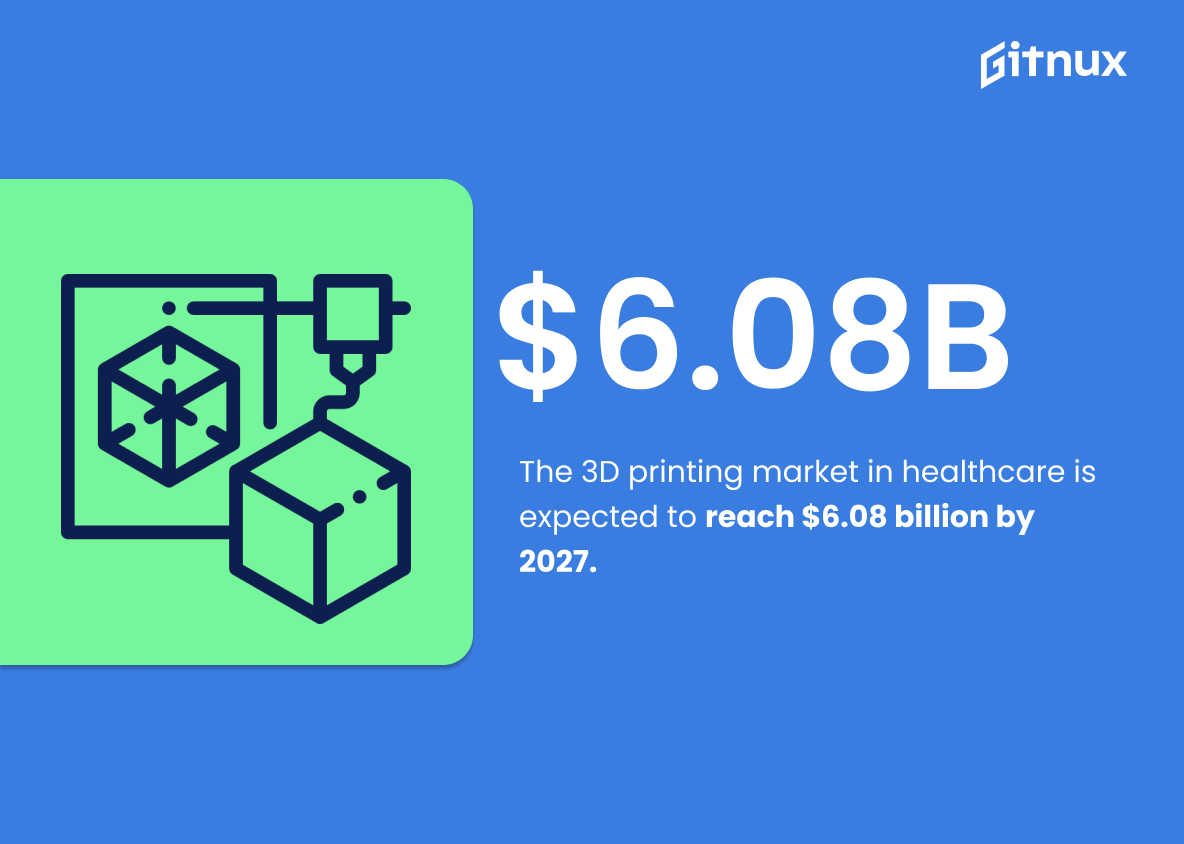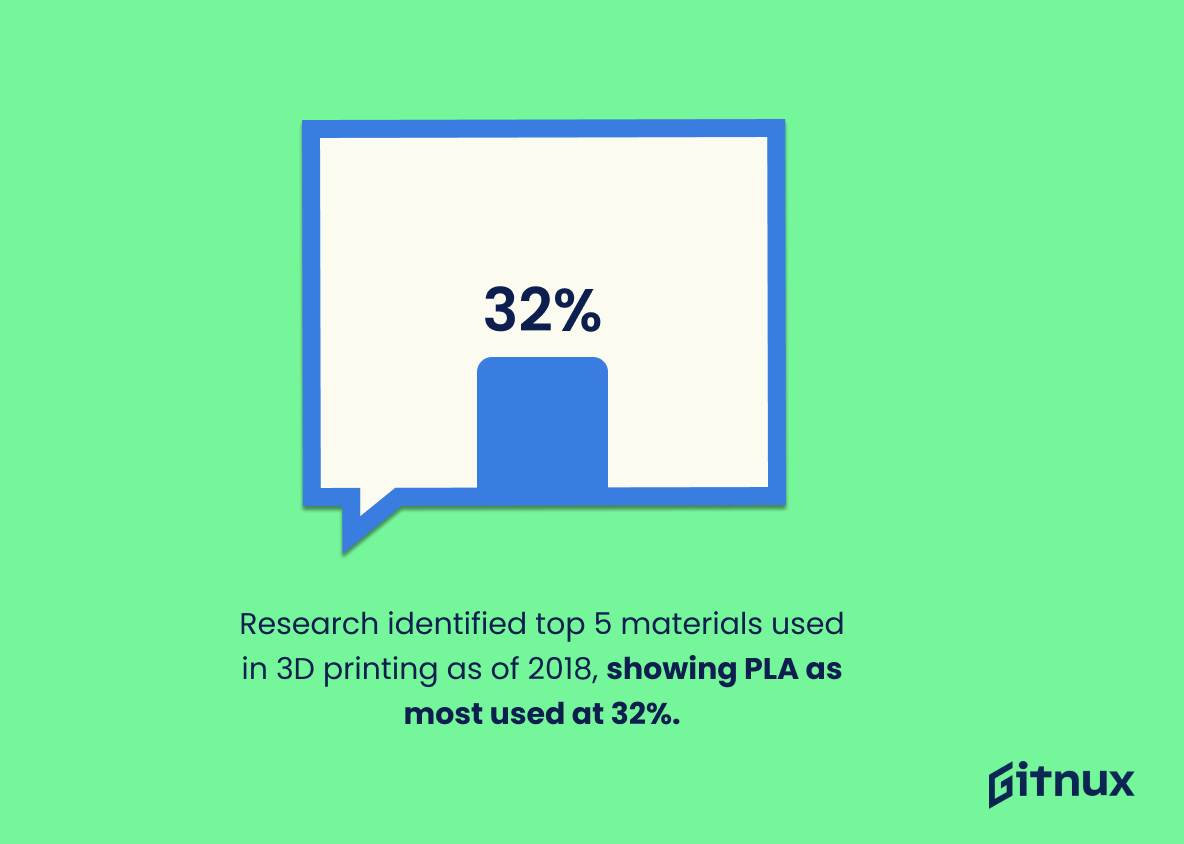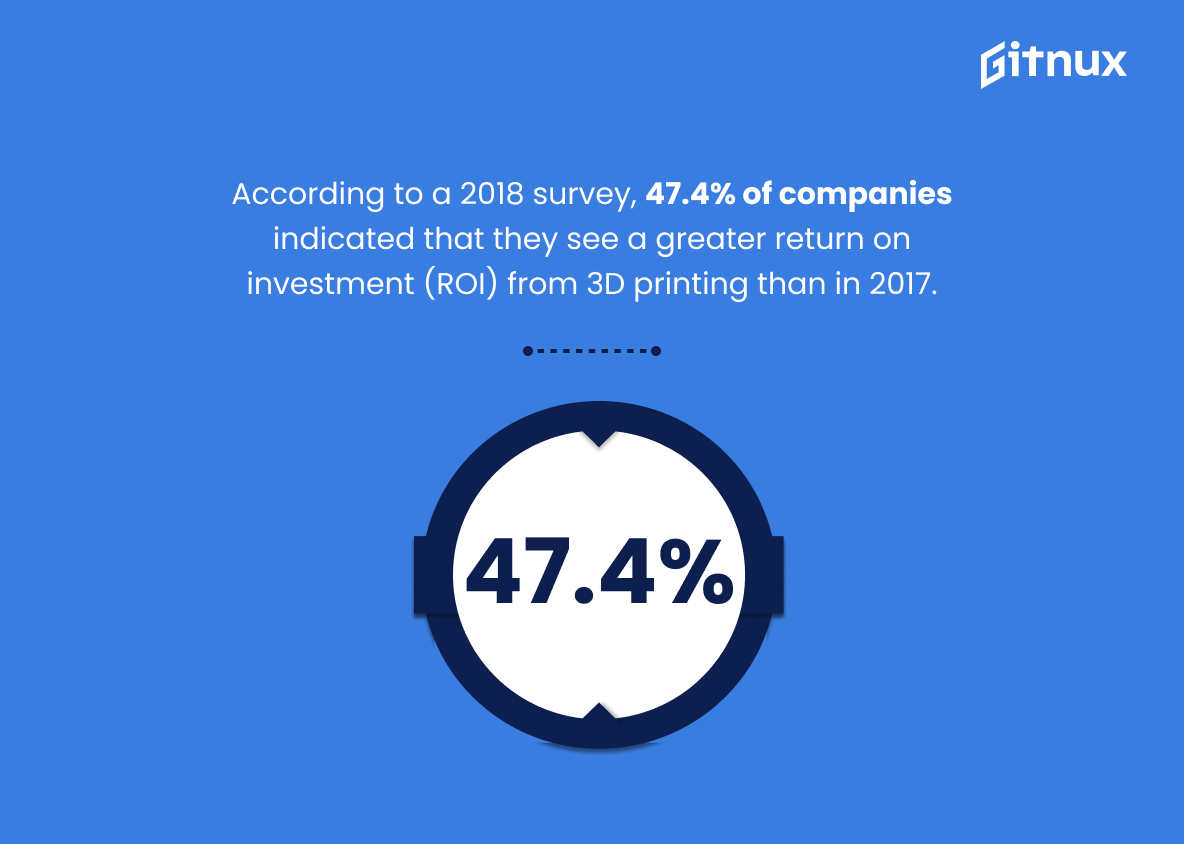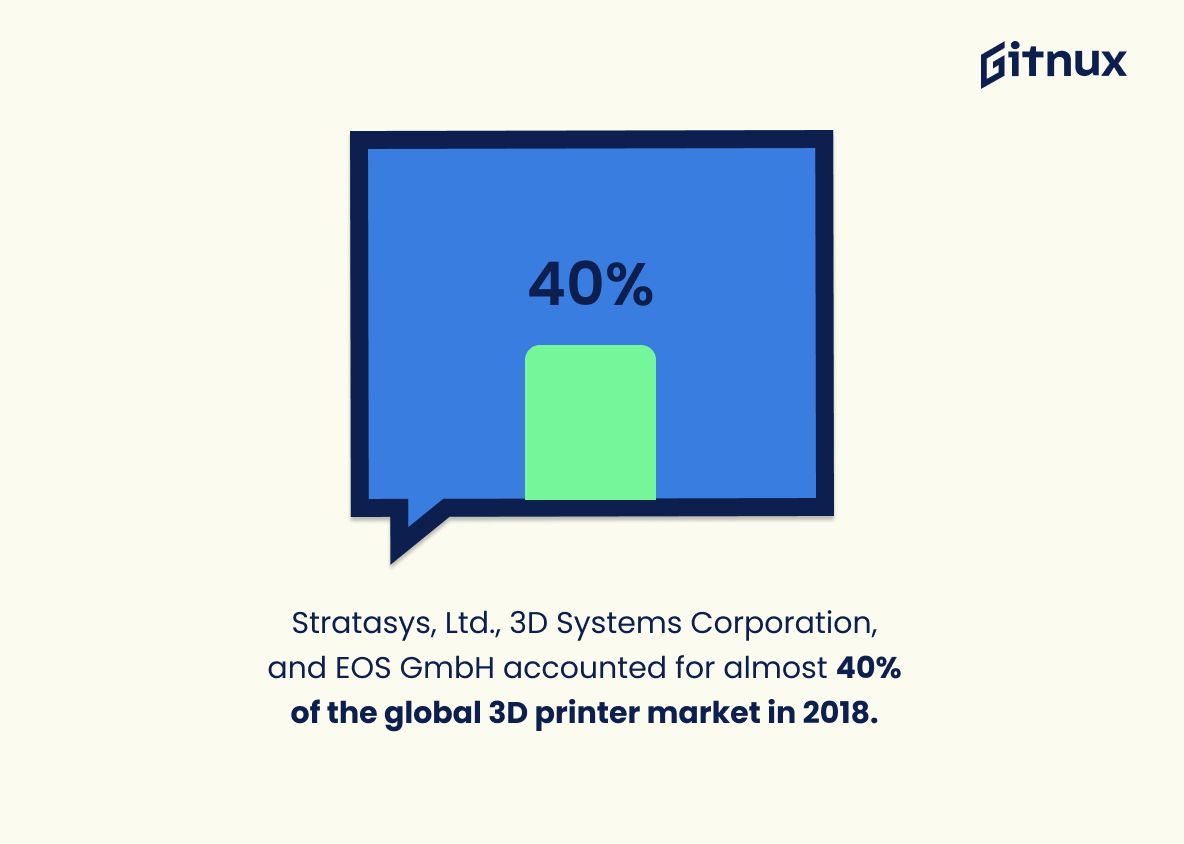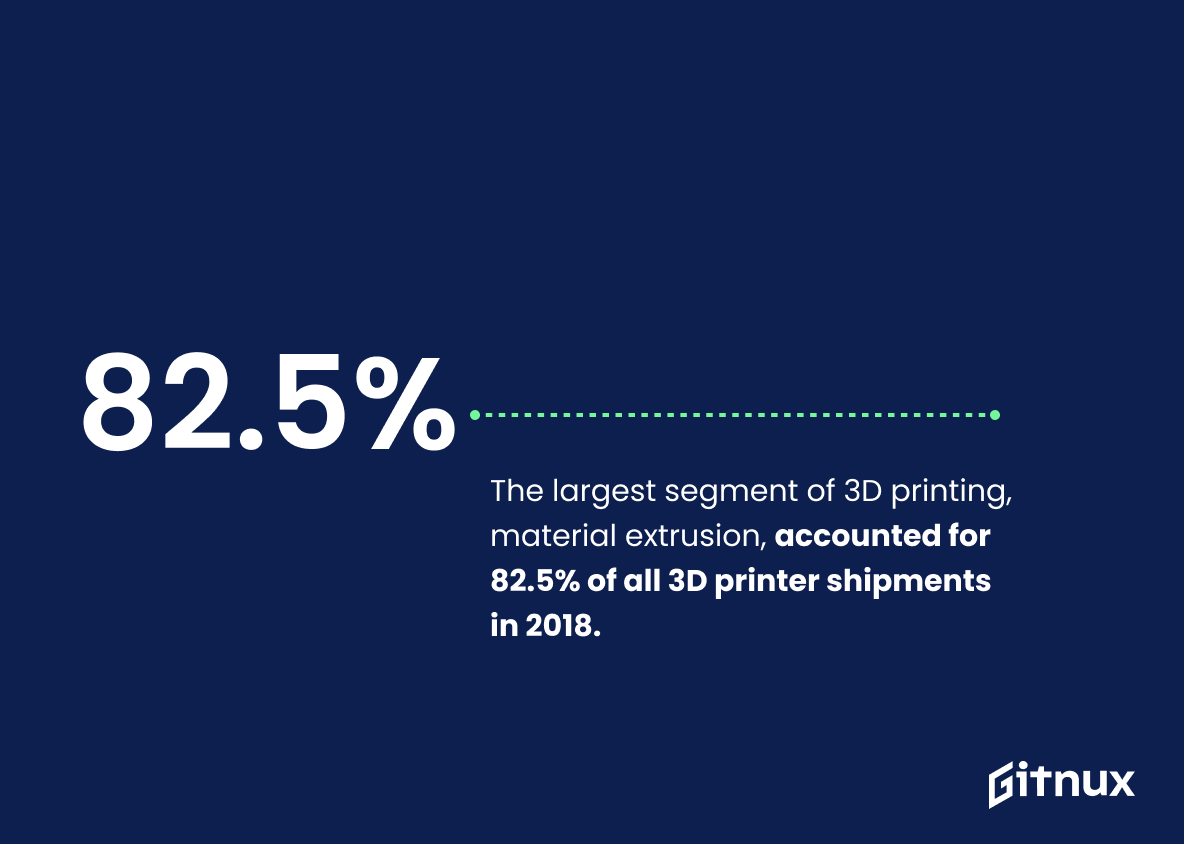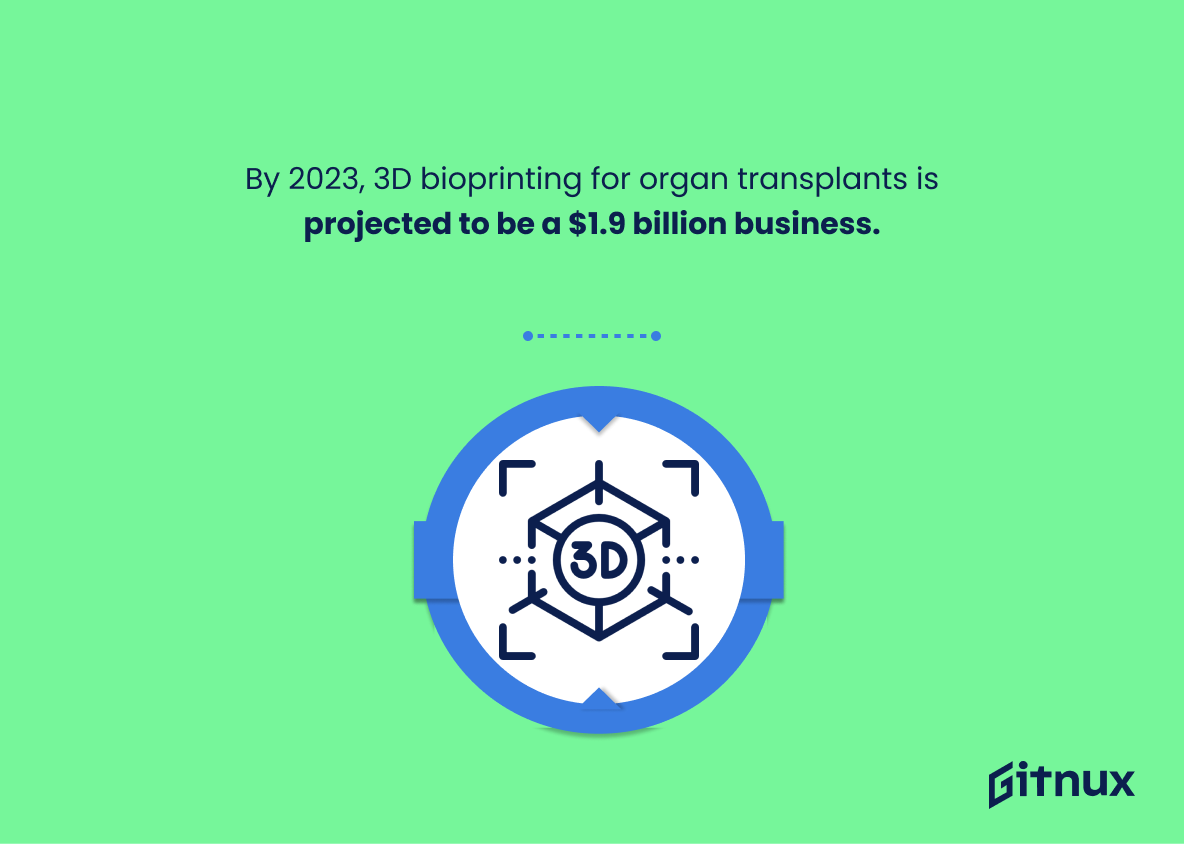Get ready to deep-dive into the dynamically evolving world of 3D printing. In this era where digital technology reigns supreme, 3D printing has emerged as an unrivaled breakthrough. It has not only taken multiple sectors by storm – from healthcare to automotive to construction – but it’s set to redefine the future of manufacturing. But how big is this industry, really? How fast is it expanding? Where is it headed?
In this blog post, we’ll unravel the latest 3D printing industry statistics, offering vital insights into its current market size, growth trajectory, and emerging trends. We’ll closely analyze data, trends, and forecasts that make 3D printing a fascinating industry to watch. Stay tuned as we uncover the numbers behind the thrilling revolution that is 3D printing.
The Latest 3D Printing Industry Statistics Unveiled
The global 3D printing market is projected to reach $34.8 billion by 2024.
Probing into this striking statistic reveals the monumental potential of the 3D printing market. By 2024, it’s forecasted that the sphere of 3D printing will have ballooned to a hefty $34.8 billion. This number is not just a testament to the growth and acceptance of this disruptive technology but also points to the fact that more and more industries are recognizing its undeniable advantages.
Imagine all the countless innovations, businesses and job opportunities that’ll be sprouting up around this dynamic sector. So, if you find yourself cocooned in the world of 3D Printing, you’re not just in a fast-evolving industry, but one fast-tracking to an immensely promising future.
Approximately 22% of manufacturers in the United States are utilizing 3D printing technologies.
Delving into the world of 3D printing industry statistics, one compelling revelation that underscores a significant shift in manufacturing trends is the fact that nearly one in five US manufacturers are at present harnessing the power of 3D printing technologies. This figure serves as a clear indication of the industry’s rapid surge and emerging influence.
The statistic paints a picture of an evolving industrial landscape and emphasizes the rising importance and relevance of 3D printing technologies in the contemporary manufacturing arena. In the frame of a 3D printing industry blog, this information carries great weight as it hints at a future where the traditional manufacturing processes may give way to more sophisticated, efficient, and versatile 3D printing solutions.
In 2018, North America accounted for the largest 3D printing market share which was 39.38%.
The lush ground of North America zoomed ahead in the 3D printing race, brazenly claiming a staggering 39.38% of the global market share in 2018. Tucked within this compelling figure, there’s a vital hint that signifies North America’s potent command, vigor and developmental edge in the 3D printing industry. Spotlighting this colossal share attests to the regions’ technological prowess, market maturity and strong industrial policies favoring such innovative technologies.
It illuminates the trail left behind by North America for other economies globally, setting a competitive bar in the international commercial space for 3D printing. Hence, it essentially functions as a reflection of America’s vibrant and flourishing 3D printing ecosystem.
The global spending on 3D printing is estimated to surpass $22.7 billion in 2022.
Reflecting on the forecast that the worldwide expenditure on 3D printing is predicted to surpass a staggering $22.7 billion in 2022, we can decipher a significant testament to the proliferation and potential this innovative industry holds. The figures speak volumes about the extraordinary pace at which the sector is mushrooming, firmly reflecting the burgeoning global interest, the spread of technology, and the willingness to invest in it.
Such a vivid increase in spending signifies that more companies, from varied sectors, are turning to 3D printing for their manufacturing needs, reinforcing its importance as a transformative technology. It also hints towards the enticing economic opportunities for businesses involved in the supply and manufacturing of 3D printers, materials, and related services.
Moreover, this financial trend ascertains the considerable impact this industry is likely to have in shaping the future of various sectors such as healthcare, manufacturing, architecture, and more. It portrays a future where 3D printing strides from being just an innovative novelty to an integral part of our everyday lives.
Thus, this eye-opening statistic illustrates the dynamism of the 3D printing industry, emphasizing the urge to keep pace with it in the ever-evolving technological landscape.
About 59% of all 3D printing work done is in the first phases of product development.
Peeling the layers from this particular statistic reveals significant implications for the 3D printing industry. It unboxes the observation that the majority of 3D printing projects are heavily concentrated in the early stages of product development. This underlines the industry’s critical role as a catalyst in product innovation, proving that 3D printing is a significant player in the preliminary phase of creating new projects.
Moreover, the inflow of companies employing 3D technology at the foremost stages of product development also denotes its growing influence in accelerating the product design process. The ability to create prototypes faster, cheaper, and with greater design freedom is causing a shift in traditional manufacturing methods.
Also notable from the statistic is the potential growth opportunity it presents. If the majority of 3D printing is currently confined to the beginning phases of product development, it demonstrates vast, untapped potential in later stages and other areas. This unveils an exciting frontier for the industry to explore and expand upon, feeding the narrative of continual growth within the 3D printing sector.
In conclusion, this statistic not only serves as recognition of the industry’s current positioning in the product development journey, but also as a roadmap hinting at where its future may lie. It places 3D printing as an indispensable ally in the product innovation landscape, and as an area poised for further expansion, innovation, and growth.
The 3D printing market in healthcare is expected to reach $6.08 billion by 2027.
The forecasted rise of the 3D printing market in healthcare to $6.08 billion by 2027 casts a spotlight on the massive potential within this innovative industry. It not only underscores the versatility of 3D printing but also hints at its transformative impact in healthcare. Injecting such an impressive figure into a blog post on 3D Printing Industry Statistics undoubtedly paints a picture of explosive growth.
It can potentially ignite conversations around investment opportunities, technological advancements, and the increasing role of 3D printing in revolutionising healthcare. It provides readers with a tangible measure of the sector’s future valuation, thereby stirring up excitement about the possibilities that lie ahead.
Research identified top 5 materials used in 3D printing as of 2018, showing PLA as most used at 32%.
Delving into the fascinating world of 3D Printing Industry Statistics, one can’t overlook the pivotal role of materials used. Taking center stage is PLA, which accounted for a whopping 32% usage rate as of 2018. This insight is not merely a number, but a resounding affirmation of PLA’s dominance in the 3D printing industry world.
It offers readers a concrete reference point for understanding industry trends, material preferences, and potential future direction. With PLA leading the race, it paves the path for stakeholders — be it manufacturers, consumers, or budding enthusiasts who are evolving with the 3D printing landscape.
The automotive sector holds the majority of the industrial 3D printing market share, at 39.08% in 2018.
Taking a thorough glance at the 3D printing market, it is striking to note that the vehicular world, the automotive sector specifically, was the dominant force in industrial 3D printing as of 2018. With an impressive command of 39.08% of the total market share, the vehicle manufacturing niche presented itself as a key player in utilizing this transformative technology.
In the grand scheme of 3D printing industry statistics, such dominant presence emphasizes the significant role the automotive industry plays in harnessing and driving forward the application of 3D printing within the industrial context. More importantly, it expounds on the industry’s recognition of 3D printing as a crucial tool to optimize production, enhance efficiency, and fuel innovation, thereby shaping the future of manufacturing within the sector.
In other words, within the diverse tapestry of industries implementing 3D printing technology, the automotive sector appears as a vivid thread, weaving an exciting image of innovative use and prominent market leadership. Therefore, this revelation is undeniably essential when dissecting the dynamics of the 3D printing industry.
In 2023, it’s projected that over 2.46 million units of industrial 3D printers will be shipped worldwide.
The predicted shipment of over 2.46 million industrial 3D printers worldwide in 2023 paints a vivid portrait of the emerging dominance this technology will capture in the industrial sector. This projection illuminates the trajectory of growth and acceptance of 3D printing on a global scale, indicating a shift towards technology-centric production methods.
Moreover, it underscores the immense potential and opportunities for manufacturers, innovators and businesses alike in adopting this disruptive technology, possibly triggering a renaissance in the manufacturing industry. The referred statistic is, thus, an indexical pointer to a pivotal era in industrial evolution orchestrated by 3D printing technology.
According to a 2018 survey, 47.4% of companies indicated that they see a greater return on investment (ROI) from 3D printing than in 2017.
Inscribing a compelling narrative with the 2018 survey revelation of 47.4% of companies experiencing a greater ROI from 3D printing compared to 2017, opens a significant window into the ever-evolving world of the 3D printing industry. The ability of a relatively new technology to enhance financial outcomes and provide measurable business value adds an exciting and encouraging dimension to the blog post about 3D Printing Industry Statistics. This glimpse into the upward trend of ROI also beckons further explorations and conversations about the economic viability and future potential of the 3D printing industry.
The aerospace and defense industry is going to claim around 25% of the total forecasted 3D printing in 2021.
Highlighting the statistic that the aerospace and defense industry is projected to account for roughly 25% of all 3D printing activity in 2021 carries significant weight. This illuminates the robust and transformative power of 3D printing technology across diverse sectors. It further underscores the welcoming acceptance and integration of this advanced printing system within high precision industries like aerospace and defense. Such a significant percentage iterates 3D printing’s crucial role in stimulating innovation, reducing costs, and enhancing efficiency, forming an integral part of futuristic manufacturing in these sectors.
Moreover, this upward trend offers insightful wisdom for investors, technicians, researchers, and policymakers, weaving a comprehensive narrative about the burgeoning influence of 3D printing in the global industry landscape. Thus, the statistic sets an influential benchmark that showcases the enormous potential and growing dominance of 3D printing, enriching our understanding of the complexities and developments within this fascinating industry.
Stratasys, Ltd., 3D Systems Corporation, and EOS GmbH accounted for almost 40% of the global 3D printer market in 2018.
Peering into the intricate world of 3D printing industry statistics, one cannot overlook the colossal influence wielded by Stratasys, Ltd., 3D Systems Corporation, and EOS GmbH. Collectively, these industry titans stamped their mark on nearly 40% of the global 3D printer market in 2018. Such dominance manifests an arresting narrative of these companies’ innovative prowess and competitive edge – a testament to their capacity to command and reshape the contours of the 3D printing landscape.
This commanding percentage effectively sets the stage for understanding market trends, competition intensity, and possible business strategies in the bustling arena of 3D printing. It also underscores the need for other market participants to either up their game or carve their niche to stay afloat.
The largest segment of 3D printing, material extrusion, accounted for 82.5% of all 3D printer shipments in 2018.
Unveiling the dominance of material extrusion in the realm of 3D printing, the staggering piece of data that it comprised a whopping 82.5% of all 3D printer shipments in 2018 underscores a key industry trend. The majestic supremacy of this technology offers discerning insight into consumer preference and industry direction, serving as a lighthouse for entrepreneurs, investors, and enthusiasts navigating the vast seas of the 3D printing industry. Essential for anyone aiming to traverse the industry landscape successfully, it becomes a cornerstone in understanding the driving forces and trends in the bustling world of 3D printing.
By 2025, 10% of people in the developed world will be living with 3D-printed items.
Visualizing a world moulded by 3D-printed items isn’t a far-off fantasy; it’s an impending reality. The statistic predicting that 10% of people in the developed world will be living with 3D-printed items by 2025 is a testament to the monumental strides the 3D printing industry is expected to make within a short time frame. This projection paints a picture of an enriched future, where untapped design potential becomes accessible, and custom-made, intricate items are the norm.
It highlights the evolution of consumer demand and lifestyle, unfolding a new age of sophisticated personalisation and unmatched efficiency. This revelation nudges businesses to embrace 3D printing and invest wisely to ride the wave of this ground-breaking technology and its extraordinary capacity for growth.
By 2023, 3D bioprinting for organ transplants is projected to be a $1.9 billion business.
This projection of 3D bioprinting for organ transplants becoming a $1.9 billion business by 2023 is not just a number, it’s a revelation in the world of 3D printing industry. It underscores the extensive monetization and growth potential that exists within this sector. What it informs us is that, not only is the 3D printing industry diversifying its applications, but it’s also increasingly playing a pivotal role in life-saving medical procedures like organ transplants.
The monetary value attached is a testament to the industry’s innovation and its power to revolutionize the medical field. This impressive figure earmarks the level of financial and economic importance that the 3D printing industry is poised to command in the near future.
Conclusion
In sum, the 3D printing industry is exhibiting significant growth as reflected by the numerous statistics and it definitely suggests a bright future. From its versatility in varied industries to the increasing rate of adoption, and from cost-saving benefits to the rising level of investment, it’s clear that 3D printing is not just a passing trend.
As we further progress into the 21st century, whether in medical fields, automotive production or even everyday household products, the influence and importance of 3D printing will continue to climb. Those who choose to stay abreast of this technology’s evolving capabilities and continue to invest in its potential are certain to reap the benefits. The future is three-dimensional and undeniably printed.
References
0. – https://www.www.globenewswire.com
1. – https://www.www.grandviewresearch.com
2. – https://www.www.giiresearch.com
3. – https://www.www.gartner.com
4. – https://www.www.bccresearch.com
5. – https://www.www.alliedmarketresearch.com
6. – https://www.www.meticulousresearch.com
7. – https://www.www.forbes.com
8. – https://www.www.idc.com
9. – https://www.www.sculpteo.com
10. – https://www.www.statista.com
11. – https://www.www.gminsights.com

